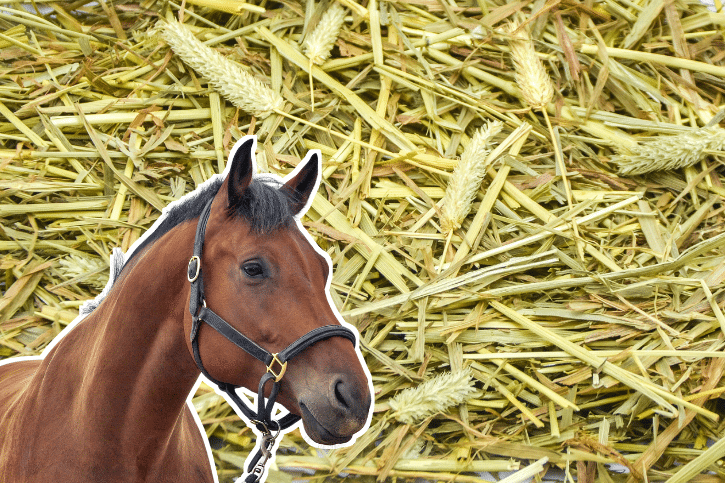Can Horses Eat Timothy Hay?
There is a meadow near my horse field which has always been absolutely overgrown with timothy grass.
I’ve always loved walking through the tall, impressive blades jutting up out of the ground.
My horses have never been there since it’s not on my property, but every time I walk through there, I do think about whether or not they could eat timothy hay.
Well, today, I decided to stop thinking about it, do some research, and find out if horses can eat timothy hay.
So, can horses eat timothy hay?
Yes, timothy hay is totally suitable and safe for all horses. In fact, timothy hay is one of the most popular hays to feed horses, as it provides a full nutritional balance and is one of the most nutritionally rich hays you can buy. Timothy hay has a well-established comfort-level as one of the best hays for horses.
Horses will have no problem eating timothy hay, and in fact it can even be the center of their diet.
So, let’s break down why it has the reputation it does, whether there are any potential problems with this type of hay, and how you should feed it to your horse.
Feeding a horse is always a bit more complex than you might imagine.
What are the benefits of timothy hay for horses?
As I said, timothy hay is one of the most popular types of hay to feed to horses among horse owners.
It has been found to promote a healthy, shiny coat.
This shiny coat might not seem immediately all that important to the horse, but a horse with a ragged, gnarled coat is likely to be less comfortable than a sleek, shinier horse.
Most importantly, timothy hay is incredibly rich in fiber.
Fiber should represent the most important cornerstone of your horse’s diet.
Enough fiber in your horse’s diet is essential to the proper functioning of its digestive system.
The fiber from the hay encourages good digestion, bowel regularity, and indeed a healthy weight.
One major problem horse owners often come up against is digestive pain and discomfort in horses.
This is usually a result of overeating of treats, or lack of proper fiber in their diet.
With timothy hay as the basis of their diet and always being sure to only give them treats in moderation, they shouldn’t have any digestive discomfort.
But what about other types of hay?
Is timothy hay the best, or are there other, better types of hay?
Read on to find out.
Is timothy hay the best for horses?
So, timothy hay is a grass hay.
Simply, this means it’s made of grass, as opposed to legume hay, like alfalfa.
The main difference is the raw nutrition content.
Grass hay, in general, has much less nutrition than legume hay, since legumes are much denser in nutrients.
This does not, however, mean it is automatically better.
A horse’s need for fiber usually outweighs its need for the extra protein from a legume hay, and horses are much more often fed grass hay than legume hay.
Some types of horse may benefit from the extra protein and nutrients of legume hay.
Very large workhorses, for example, might need the extra nutrients.
But, in general, grass hay will provide all the necessary nutrition and, more importantly, all the fiber.
Legume hay, while still highly fibrous, is much lower in fiber than grass hay.
So, other grass options include Kentucky bluegrass or orchardgrass.
The point is, most horse owners agree grass hay is best.
What kind of hay is bad for horses?
So, your best option for your horse is some variety of grass hay, and timothy hay is certainly a fantastic choice.
But are there any types of hay you should actively avoid?
Most types of hay are fine, but there are a couple that won’t provide the best, full-rounded nutrition that you’ll get from grass hays.
Perennial ryegrass and rye hay are both best avoided.
They’re much more popular on dairy farms, but the seed heads in the grass contain an endophyte neurotoxin, which has been known to cause tremors in horses.
Argentine bahiagrass, also has potentially dangerous seed heads.
For this type of hay, the seed heads contain ergot fungus that can cause abortion in mares.
Best kept away from your horses.
Other examples of grasses to avoid include Johnsongrass, switchgrass, and Foxtail Millet.
There are, as you can see, countless varieties of hay out there. Don’t take any chances, simply stick with timothy hay.
Is timothy grass the same as timothy hay?
Yes, timothy hay and timothy grass are the same thing.
Any grass hay is just grass that has been cut down and left out to dry.
So, when we say timothy hay, we just mean timothy grass that has been cut and left to dry.
This is part of why hay is such a staple food of farm animals.
Grass is incredibly easy to grow in a very short time, and you get huge amounts of it to turn into nutritious food.
So, hay, simple a food as it might seem, is actually very nutritionally rich for your horse and is packed with countless benefits.
It should always be the staple of your horse’s diet, and everything else you feed it should be secondary.
That’s not to say that your horse won’t benefit from different varieties of hay, but timothy hay represents a fantastic all rounder foundation to your horse’s diet.
